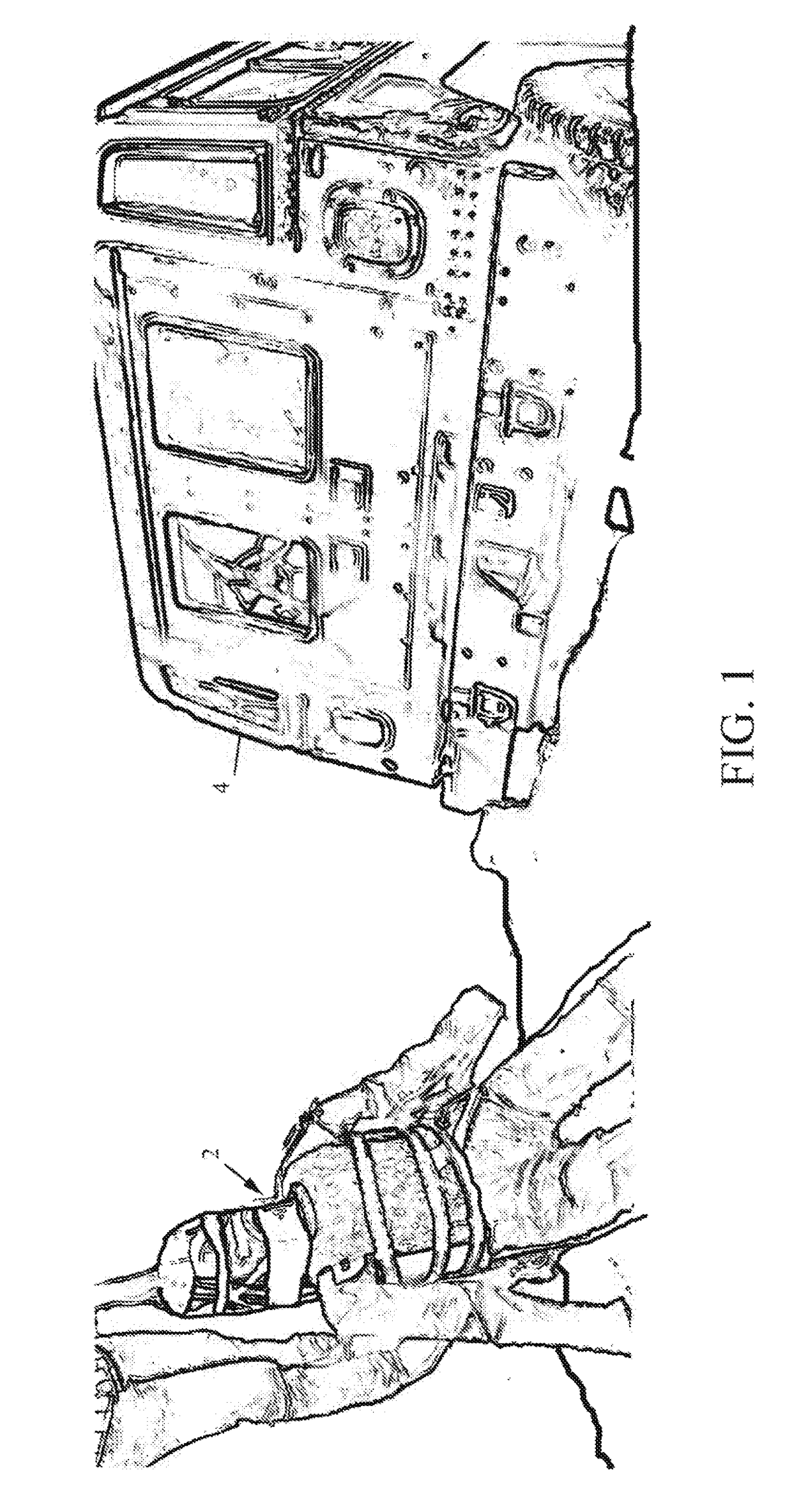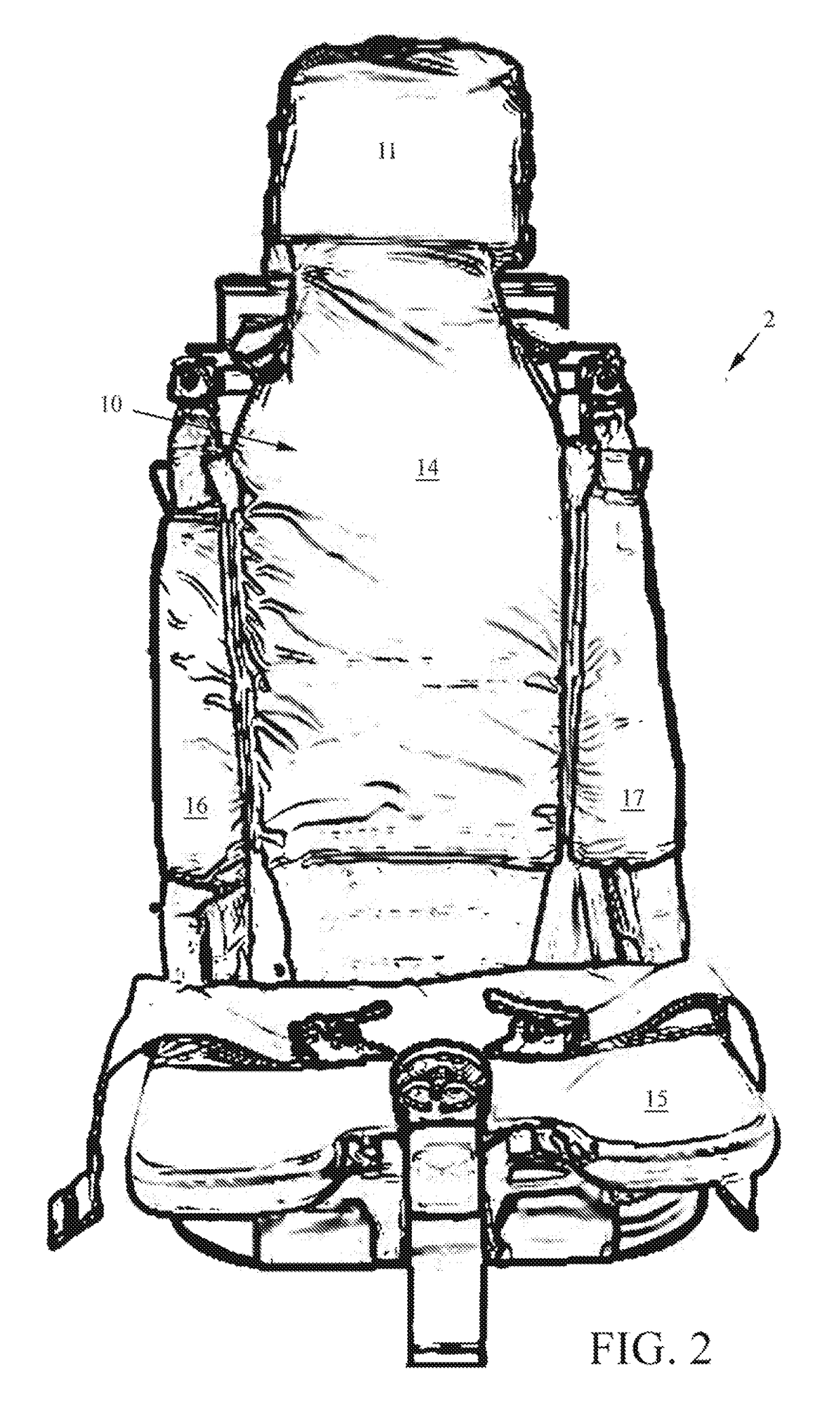Vehicle extraction device
a technology for removing devices and vehicles, applied in bed linen, applications, transportation and packaging, etc., can solve the problems of affecting the care of patients, affecting the quality of life of patients, and affecting the safety of patients, so as to avoid injury, facilitate care, and save lives
- Summary
- Abstract
- Description
- Claims
- Application Information
AI Technical Summary
Benefits of technology
Problems solved by technology
Method used
Image
Examples
Embodiment Construction
[0021]The present invention is a vehicle extraction device 2 for stabilizing a patient still seated in the seat of a vehicle 4, and for extracting that patient in the seated position, thereby reducing the risk of secondary injuries. The vehicle extraction device 2 uses deployable support structures, e.g., stiff inflatable structures that inflate to provide support and secure the patient. Prior to deployment the extraction device integrates with the existing seat structure of the vehicle, but easily separates from the seat during use so that the seat (including frame, linear rails, energy absorber mechanism, etc.) can be left behind as illustrated in FIG. 1. Thus in normal, pre-blast / crash operations, the uninflated vehicle extraction device simply acts as the outer fabric of the seat back and seat cushion, with deployable structures folded / tucked behind the seat back and under the seat pan. Upon arrival of a medic or fellow soldier, sections of the device are sequentially deployed t...
PUM
 Login to View More
Login to View More Abstract
Description
Claims
Application Information
 Login to View More
Login to View More - R&D
- Intellectual Property
- Life Sciences
- Materials
- Tech Scout
- Unparalleled Data Quality
- Higher Quality Content
- 60% Fewer Hallucinations
Browse by: Latest US Patents, China's latest patents, Technical Efficacy Thesaurus, Application Domain, Technology Topic, Popular Technical Reports.
© 2025 PatSnap. All rights reserved.Legal|Privacy policy|Modern Slavery Act Transparency Statement|Sitemap|About US| Contact US: help@patsnap.com



